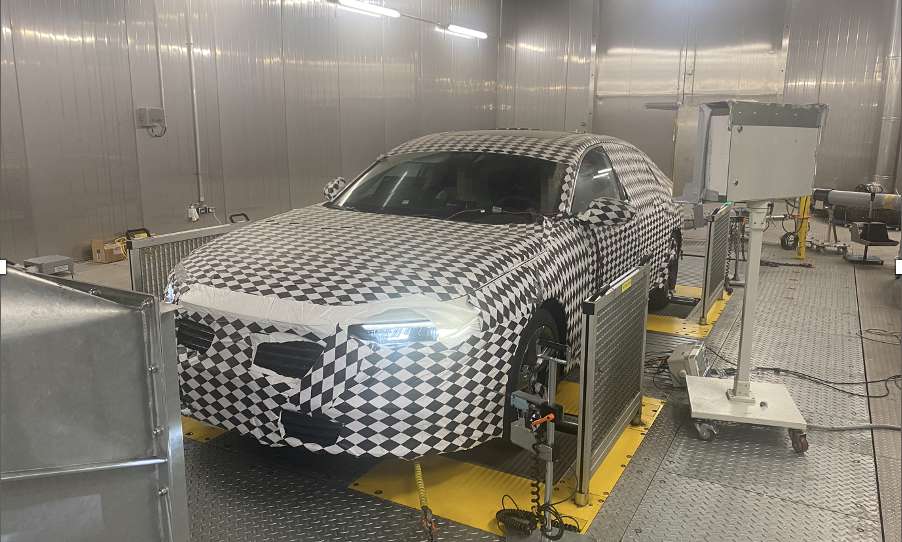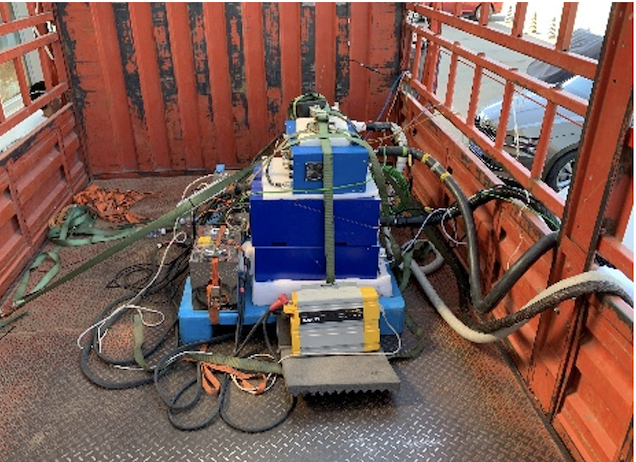Electric vehicles, and tight regulation of car and truck emissions, are improving the health of millions in China.

A Tsinghua team has tested various plug-in hybrid electric vehicles (pictured) and found that a range of different travel profiles affects emission mitigation benefits. They encourage policy-makers to take a nuanced view of the benefits.
China’s city roads are among the most congested on the planet as rapid economic growth has seen the number of vehicles rise more than 40-fold in the last 20 years. People in China owned 240 million vehicles in 2018, up from about 27 million in 2004. Cars and trucks have mobilised Chinese society, but have brought a terrible health burden.
Internal combustion engines spew fine particulate matter (known as PM2.5) and nitrogen oxides, (NOx), which forms ground-level ozone and smog. Once inhaled, this toxic pollution triggers heart disease, respiratory problems, and other illnesses.
In 2015 alone, PM2.5 contributed to 810,000 deaths in China. Ozone exposure adding a further 170,000 deaths.
Now, a team led by Shaojun Zhang from Tsinghua University’s School of Environment is looking at what has worked to reduce pollution to drive new air quality polices, and refine old ones.
Strict pollution policies
China, which first introduced policies to reduce traffic pollution at the end of the 1990s, has pushed ahead with strict regulations, leapfrogging other countries in scope, notes Zhang. Now, “China’s regulation system is one of the most stringent in the world.” For instance, in many regions of China, controls such as on-board monitoring of NOx emissions for some diesel vehicles, are standard.
After years investigating how effective China’s policies are, Zhang and his colleagues are optimistic. They have shown that deaths due to PM2.5 and ozone would have been roughly 50% greater in China without pollution control measures, because vehicle emissions from 1998 to 2015 would have been 2–3 times larger1.
The benefits were most significant in urban areas that see the highest levels of pollution, he adds.

Researchers have been using real-time diagnostics platforms to track carbon dioxide and nitrogen oxides emissions in Beijing city.
Electric avenue
China’s transition to electric vehicles is also playing a vital role in improving health, as well as the economy, says Zhang.
Again, China leads this global development. About half of all new electric vehicles sold globally are purchased in China. In 2018, annual sales across the country exceeded one million, and those numbers will soon increase exponentially.
China’s New Energy Vehicle Industrial Development Plan (2021-2035) plans to put roughly 80 million electric vehicles on China’s roads by 2030, including battery electric vehicles (BEVs) and plug-in hybrid electric vehicles (PHEVs). BEVs alone could account for 30-40% of passenger car sales by 2030.
Electric vehicles are usually promoted as a way to reduce CO2 emissions and tackle climate change. But Zhang’s team shows that this transition promises significant health benefits, too.
The researchers used an atmospheric chemistry model to estimate the impact of achieving 27% electrification of private vehicles, and a larger proportion of commercial vehicles (e.g., more than 80% for urban transit buses), by 20302.
They estimate that meeting this target would reduce PM2.5 levels in urban areas by up to 3%, and reduce NOx levels by up to 19%, reducing urban ozone levels. This, in turn, would avoid about 17,000 premature deaths per year, with the most significant health benefits seen in large cities.
There is also an economic benefit of electrification, points out Zhang. Health gains, together with the reduction in greenhouse gas emissions, delivers an economic benefit of US$10 billion in just three urban regions in the south and east of the country by 20302, the team estimates. These regions were the Beijing–Tianjin–Hebei region, which contains cities such as Beijing; the Yangtze River Delta region, which includes Shanghai; and the Pearl River Delta, which includes cities such as Guangzhou and Shenzen.
Vehicle electrification also reduces CO2 emissions, including when increased emissions from the power stations that generate electricity, and the factories that produce components, are taken into account.
Zhang’s team used a technique called life-cycle assessment to calculate how the shift to electric vehicles changed CO2 emissions, including emissions released at every stage of electric car manufacture.
The results showed that in 2015, electric models reduced the average lifetime CO2 emissions of a vehicle by 23%, compared with an internal combustion engine vehicle. By 2020, that reduction had grown to about 40% due to factors such as better battery performance, more efficient use of materials, and China’s growing deployment of renewable power, a trend Zhang expects to continue3.
The benefits even held good in northern China, which is most dependant on coal-fired power plants. There switching a petrol or diesel car for a BEV in 2020 reduced lifetime CO2 emissions of the vehicle by roughly 30%. In areas with cleaner electricity grids, that reduction was as high as 62%.
Diesel and data
Another key policy that is helping tackle traffic pollution is the mandated use of sensors in heavy diesel vehicles that monitor NOx emissions in real-time. When the monitor detects levels above a set threshold it triggers catalytic converter in the exhaust system to reduce emissions. It also alerts the environmental authorities in each of the regions run by China’s Ministry of Ecology and Environment.
In Beijing, vehicle manufacturers have had to fit these monitoring systems into new vehicles since 2018. Soon, older vehicles may need to retrofit monitoring systems.
The Zhang team has found that data from sensors in new vehicles show that they work well, retrofitted units were not always reliable4.

On board emission measurement platforms (pictured) are fitted to vehicles and can be used to collect second-by-second profiles of carbon dioxide and other air pollutant emissions.
For Zhang there is a clear path towards even greater reductions in traffic pollution and improvements in health. He proposes government subsidies for electric vehicles should continue, and municipal governments should focus their electrification incentives on urban areas, for example by creating low-emission zones. Rigorous inspections of vehicles and their emissions is also a must, he says.
Lessons learned in China about effective pollution control could also help improve health in other developing countries such as India, he says.
“Our results show that the declines of various pollutants will continue, and electrification will be one of the most important factors to achieve deeper emission reductions due to the increase in renewable energy systems,” says Zhang.
References
1. Wang, H., He, X., Liang, X., Choma, E. F., Liu, Y. et al. Health benefits of on-road transportation pollution control programs in China. Proc. Natl. Acad. Sci. U.S.A. 117, 25370-25377 (2020). doi: 10.1073/pnas.1921271117
2. Liang, X., Zhang, S., Wu, Y., Xing, J., He, X. et al. Air quality and health benefits from fleet electrification in China. Nature Sustainability 2, 962-971 (2019). doi: 10.1038/s41893-019-0398-8
3. Wang, F., Zhang, S., Zhao, Y., Ma, Y., Zhang, Y. et al. Multi-sectoral drivers of decarbonizing battery electric vehicles in China. PNAS Nexus 2, 1-7 (2023). doi: 10.1093/pnasnexus/pgad123
4. Zhang, S., Zhao, P., He, L., Yang, Y., Liu, B. et al. On-board monitoring (OBM) for heavy-duty vehicle emissions in China: Regulations, early-stage evaluation and policy recommendations. Science of the Total Environment 731, 139045 (2020). doi: 10.1016/j.scitotenv.2020.139045
Editor: Guo Lili